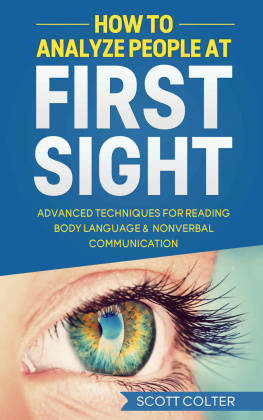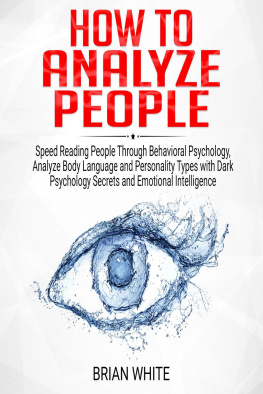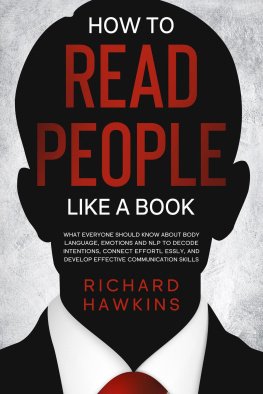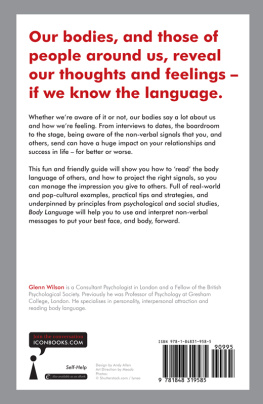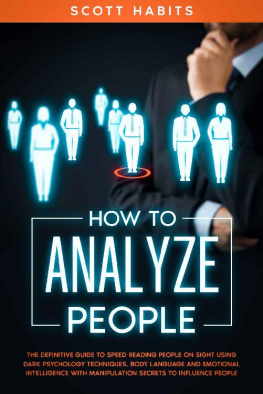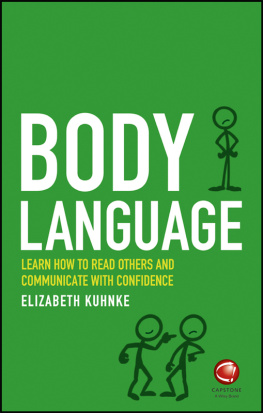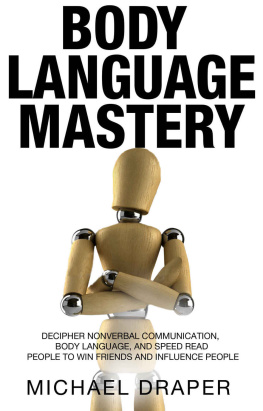Scott Colter - How to Analyze People at First Sight
Here you can read online Scott Colter - How to Analyze People at First Sight full text of the book (entire story) in english for free. Download pdf and epub, get meaning, cover and reviews about this ebook. year: 2015, publisher: CreateSpace, genre: Religion. Description of the work, (preface) as well as reviews are available. Best literature library LitArk.com created for fans of good reading and offers a wide selection of genres:
Romance novel
Science fiction
Adventure
Detective
Science
History
Home and family
Prose
Art
Politics
Computer
Non-fiction
Religion
Business
Children
Humor
Choose a favorite category and find really read worthwhile books. Enjoy immersion in the world of imagination, feel the emotions of the characters or learn something new for yourself, make an fascinating discovery.
- Book:How to Analyze People at First Sight
- Author:
- Publisher:CreateSpace
- Genre:
- Year:2015
- Rating:5 / 5
- Favourites:Add to favourites
- Your mark:
How to Analyze People at First Sight: summary, description and annotation
We offer to read an annotation, description, summary or preface (depends on what the author of the book "How to Analyze People at First Sight" wrote himself). If you haven't found the necessary information about the book — write in the comments, we will try to find it.
Learn how to deliver the best first impression possible and have a great influence on others.
Discover what the most common everyday body moves and habits mean and interpret feelings, thoughts and intentions accurately.
Stand Out From The Crowd-Get One Step Ahead In Every Relationship!
You will also get a second book COMPLETELY FREE!
This special gift will teach you the most effective methods to lose fat fast and enjoy a healthful life.
Take Advantage Of This Mind-Blowing Book And Architecture Your Life With Ease!
- The basics of body language separated in 5 easy to understand categories
- How to improve your non-verbal communication skills and become easier to understand
- The easiest way to make a good first impression and start your relationships in the right way
- How to better understand smaller signals that most of the people ignore
- Much, Much More!
Scroll up & Download this book now!
Tags: How To Analyze People, Body Language, How To Read People, Analyze People, Human Psychology, psychology today, psychology books
Scott Colter: author's other books
Who wrote How to Analyze People at First Sight? Find out the surname, the name of the author of the book and a list of all author's works by series.

